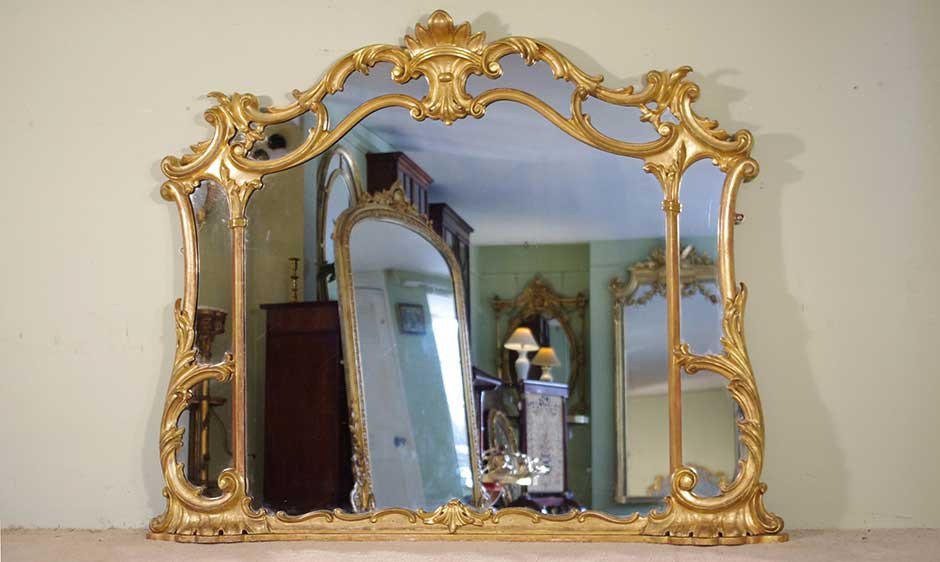
It was the Venetians who invented the first broad-glass flat mirrors, way back in the 16th century. Before then, there were only convex antique mirrors from German glassmakers. In the late 1600s, the first plate-glass technique was used at the Saint Gobain Glasshouse in Paris, before Brits began manufacturing large (and largely admired) plates towards the end of the 18th century.
With an astonishing diversity of pieces that have evolved over the centuries, buyers are left with a vast scope of antique mirrors to research. From bagging a valuable Regency mirror to spotting a 20th-century copy, this guide will help you get a thorough understanding of the mirrors antiques market:
1. Know your mirror glass
Finding antique mirrors with original plates of glass will up the value significantly. Mirrors antiques from the 18th-century have a relatively thin glass, an uneven cut, and soft, shallow bevelling. Victorian mirrors are thicker and bevelling is the opposite: mostly even and cut at an acute angle. If the glass on antique mirrors is colourless, it could be a telltale sign that it’s modern. If it’s cloudy, however, it’s more than likely an antique that can be resilvered. Some antique mirrors from the 1750s even have a coloured mirror plate - a few rare pieces survive with floral garlands painted on with oils. If you’re looking at how to clean an antique mirror, repair it or replace the glass, be aware that this will impact the price.
2. Learn how to age antique mirrors
Some antique mirrors, especially Chippendale mirrors, are notoriously hard to date. Generally, the back of mirror antiques can give you an idea: look out for maker’s names and manufacturing origins, and acquire those with a wood backing (rather than paper) as these are usually antique. Nails, hangers and screws can also give you an idea of how old antique mirrors are. There are other ways to figure out age: some 19th-century copies of Rococo antique mirrors (a style often used by Thomas Chippendale (1718-79), who designed exceedingly popular carved giltwood mirrors during the time) often have regilding and discolouring washes, but what gives the game away is the misunderstanding of the era’s motifs. Rococo Revival antique mirrors tend to be over-the-top with decorations and feature heavy carving.
3. Get an idea of values
Buying from a reputable dealer (browse our range of brilliantly priced antique mirrors) means you can guarantee a piece is genuine. You can ask them to point out repairs and alterations and get advice on values. From lowest to highest, here are a few examples of valuable mirrors and how to spot them:
- Regency mirrors. A walnut toilet mirror from the early 18th century, with three small drawers, small bun feet and japanned decoration, can value between £200 to £400. Another great find in the world of Regency mirrors are cheval designs. Manufactured from the late 18th century to the early 19th century, these often-mahogany antique mirrors were crafted to see a full-length reflection and can value at an average of £3,000.
- Baroque antique mirrors. Originals from the 17th-century are usually rectangular with bevelled central plates - a small Flemish-framed example in tortoiseshell and ivory can reach up to £6,000. But you’re more likely to come across a 20th-century copy: decorative replicas produced in 1900 can fetch up to £600.
- Rococo antique mirrors. Previous rectangular shapes and formal style of ‘Palladianism’ were eschewed for oval-shaped mirrors. An English giltwood Rococo mirror from 1760 can value at up to £20,000.
From brass Victorian mirrors that double up as wall sconces to late 19th-century Gothic beauties, we’re constantly adding new and exciting pieces to our selection. Browse our range of antique mirrors yourself or come to our sprawling antiques centre to see them in all their glory, with prices to suit all kinds of buyer budgets.